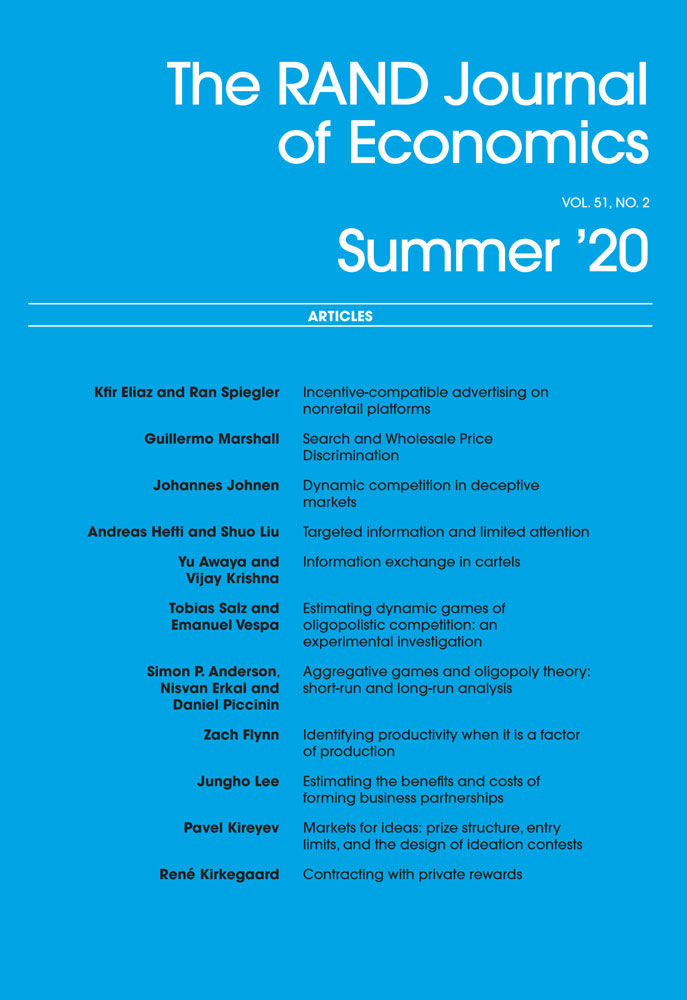Information exchange in cartels
The research reported here was supported by a grant from the National Science Foundation (SES-1626783). Awaya and Krishna thank Reiko Aoki, Kentaro Inomata, Jun Nakabayashi, Hiroyuki Odagiri, and Yosuke Okada for helpful comments, especially concerning antitrust practice in Japan. We also thank Yossi Spiegel for his comments and the referees and the editor for their suggestions.
Abstract
Antitrust authorities view the exchange of information among firms regarding costs, prices, or sales as anticompetitive. Such exchanges allow competitors to closely monitor each other, thereby facilitating collusion. But the exchange of aggregate information, perhaps via a third party, is legal. The logic is that collusion is difficult if the identity of a price-cutting firm cannot be ascertained. Here, we examine this logic using Stigler's model of secret price cuts. We first identify circumstances such that when no information exchange is possible, collusion is difficult. We then show that if firms' aggregate sales are made public, nearly perfect collusion is possible.




